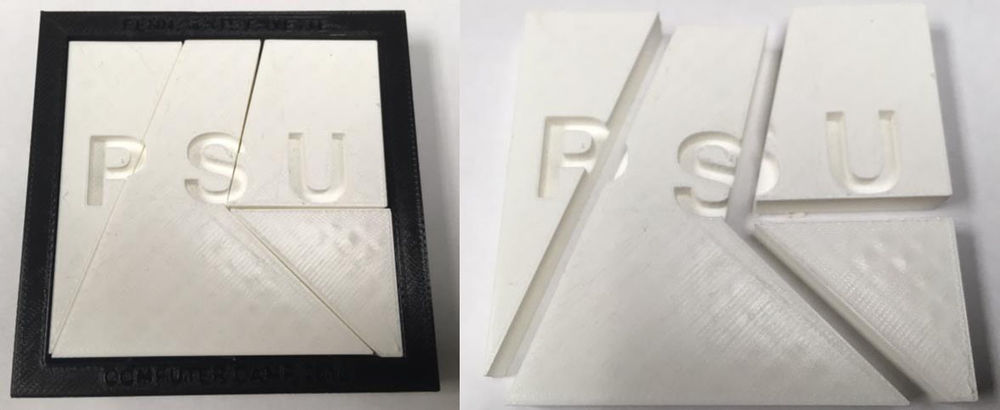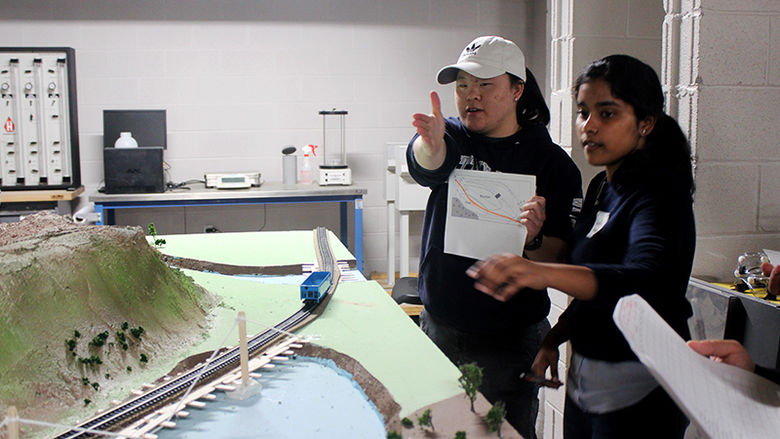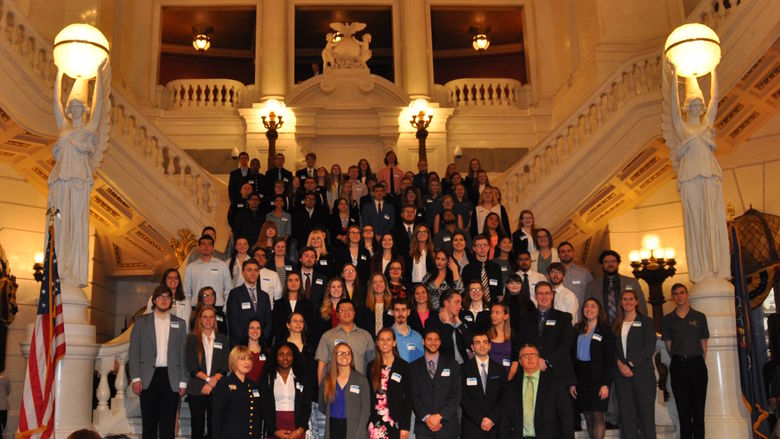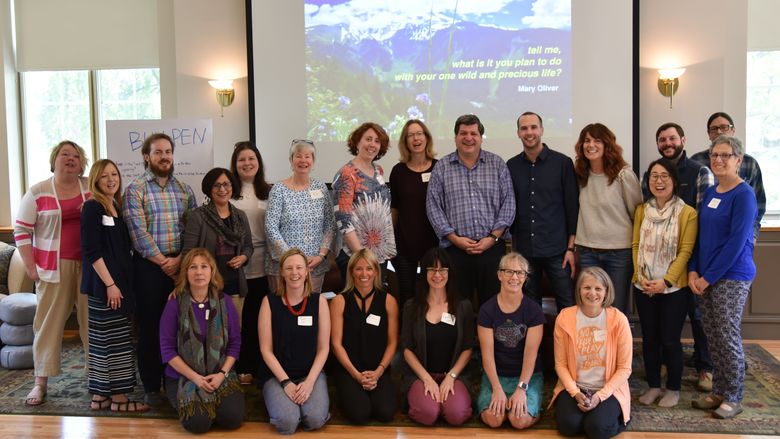
This Penn State desk puzzle was one of several game prototypes created in Bohna's engineering design course.
One instructor at Penn State Fayette, The Eberly Campus has been working to expand educational opportunities for 3D printing at his campus, through both his classes and his push for a dedicated 3D printing center.
"This is a very relevant technology in society, so I think this is a marketable skill for students to have,” said Nate Bohna, an engineering instructor at Penn State Fayette.
Through a grant he applied for about a year and a half ago, Bohna acquired two 3D printers for his engineering design course. Thanks to $5,000 from an Engineering Technology and Commonwealth Engineering (ETCE) program enhancement grant, Bohna has been using these printers in his classes for three semesters now. According to Ivan Esparragoza, director of ETCE, approximately $33,000 for 3D printers has been awarded in the past two years to not only Penn State Fayette but a few other Penn State campuses, including Brandywine, DuBois, Fayette, Greater Allegheny, Lehigh Valley, and Worthington Scranton.
Those two printers were just the start for the Fayette campus, as plans are now in the works to renovate the third floor of the Eberly Building to create a 3D printing lab. Bohna said the floor will be renovated over the summer to become a hub for science, technology, engineering, the arts, and mathematics, also known as STEAM.
The 3D printing lab will be the centerpiece of the engineering wing, and next door to the lab will be another lab for computer-aided design (CAD), which will allow students to draw their 3D creations. Bohna said he is currently in the process of purchasing two more 3D printers, as his goal is to have at least six printers in the lab. The STEAM floor renovations are expected to be completed in time for the start of the fall 2017 semester, which coincides perfectly with a new honors art course Bohna has created that will focus entirely on 3D printing.
"My goal is to integrate engineering and art, and 3D printing is a wonderful way to do this,” he said. “We can draw and print things and we can bring in an artistic perspective.”
Before his campus was awarded the grant money for printers, Bohna said 3D printing was a very new concept to him.
“I knew nothing about 3D printing or very little about 3D CAD, so this was all very much outside of my comfort zone and my knowledge level,” he said. “I've really gotten into self-learning."
Bohna said he decided to get involved with 3D printing because he saw it as a great way for students to see their ideas fully laid out before them. Before 3D printing, students could only make an idea out of paper and tape it together, or whittle something out of wood, which took a very long time. The quick turnaround when it comes to 3D printing is a big advantage, Bohna said, as students can now have an idea and then two or three days later have an actual prototype of that idea. The prototype allows students to see what parts of the idea they like and which parts they do not.
In his engineering class, which he teaches in the fall, Bohna said he has his students typically work with 3D printing for three weeks.
He said the first semester that his students used the printers, he had them design prototypes of games, from chess to a Penn State version of “Don’t Break the Ice.” His students really enjoyed the challenge involved, especially when it came to making their own prototypes of chess pieces.
"They're creating these things from nothing,” Bohna explained. “They have this idea, they're drawing it in CAD, and they're printing it. So this isn't something where they're just finding some 3D thing off the internet and just printing it for fun."
Bohna said he has also used the 3D printers in sophomore engineering mechanics classes as honors projects for extra credit projects. Last fall, a group of his students printed small wind-propelled cars for a project for Engineering Days, which is an annual event at the Fayette campus where students have created projects to teach junior high students about engineering. He said his students had a lot of fun designing and printing the wheels, axles and propellers for the body of the car, which they also designed with the 3D printers.
This past semester, Bohna gave his students a midterm project that involved designing a pencil sharpener. For the project, his students had to design a workable container that had a lid that could close, which Bohna said sounds a lot easier than it really was.
"It's a simple concept that you take for granted when you buy something in the store that has a pencil sharpener container where the lid pops off,” Bohna said. “They had difficulty, but it was quite fun.”
For instructors looking to incorporate 3D printing into their classes, Bohna said time management and planning are two key aspects. It does take a very long time to print things when using only a couple of 3D printers, so instructors need to really think about how they plan to integrate 3D printing into their class in a way that is logical.
For example, if a class of 20 students is not broken up into groups and has 20 things to print, it will take a week for the printing process, Bohna explained. It will work better to split those students up into five groups of four students, so that there will only be five things to print and it will only take three to four days.
Bohna said that incorporating 3D printing into engineering classes is especially important for students’ futures. It looks good on their resumes when they enter the job market, as 3D printing is a major topic in the industry.
“If we're not teaching these engineers 3D CAD, then they're not going to be marketable when they get out there,” Bohna said.
The Maker Commons, a free 3D printing and makerspace service provided by Teaching and Learning with Technology, is available to all faculty and students at every Penn State campus. Prints can be submitted online and will be shipped to the local campus library via the inter-library loan system. Maker Commons consultants are available to discuss 3D printing and making ideas with faculty regardless of previous experience and they encourage course assignments and experimentation. For more information, visit http://makercommons.psu.edu.





